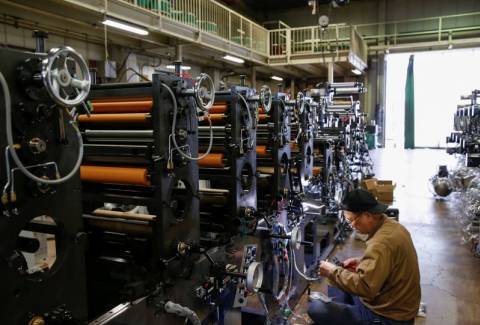TOKYO (Reuters) - Japan's manufacturing activity grew at its slowest pace since the start of last year in September as a slide in output and new orders intensified due to weakening demand from China, the United States and other trading partners.

The au Jibun Bank Japan Manufacturing Purchasing Managers' Index slumped to a seasonally adjusted 50.8 in September from a final 51.5 in the prior month.
That marked the weakest growth rate since January last year when it was last in contraction and was lower than a 51.0 flash reading.
Weakness in Japan's manufacturing sector persisted in September and even turned worse, said Joe Hayes, senior economist at S&P Global Market Intelligence, which compiles the survey.
While high inflation eroded client purchasing power, slowing global economic growth hurt exports, he added.
Weakness in the yen is doing little to bolster export demand either and instead is pushing imported inflation up drastically and drove domestic price pressures up even further, Hayes said.
The gloomy reading contrasted with strong official manufacturing data released on Friday. Factories in the world's third-largest economy ramped up output by 2.7% in August on firmer machinery production, and expected output to rise in September and October as well, that data showed.
The PMI survey showed new orders shrank at the fastest rate in two years, while output posted its sharpest decline in a year.
Forward-looking indicators from the survey suggest that the downward trend in output looks set to persist in the fourth quarter, said Hayes.
Increases in inventories, which according to panelists was due to poor sales performances, (highlight) how weak underlying demand conditions are for Japanese goods.
A sharper downturn in overseas economies would likely make Japan increasingly reliant on consumption, investment and broader economic activity at home for growth.
(Reporting by Daniel Leussink; Editing by Sam Holmes)
